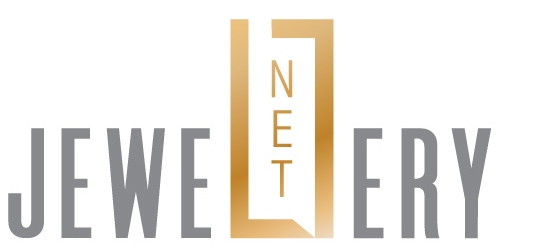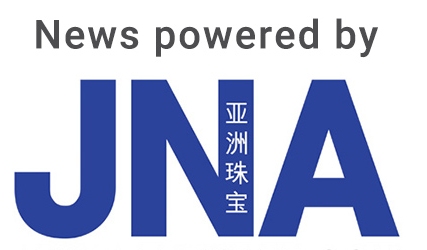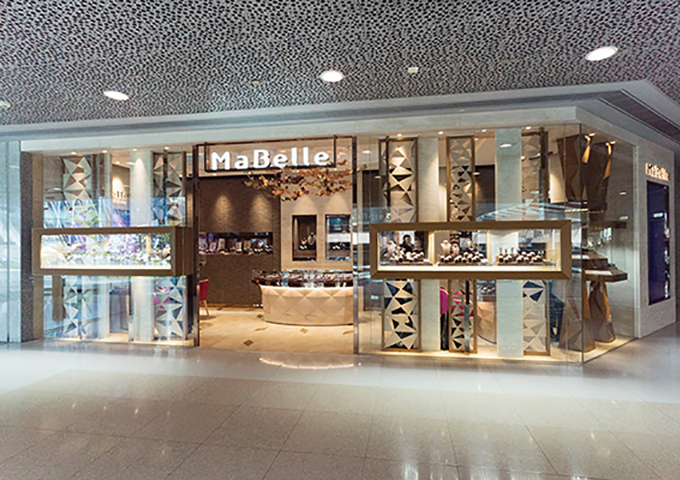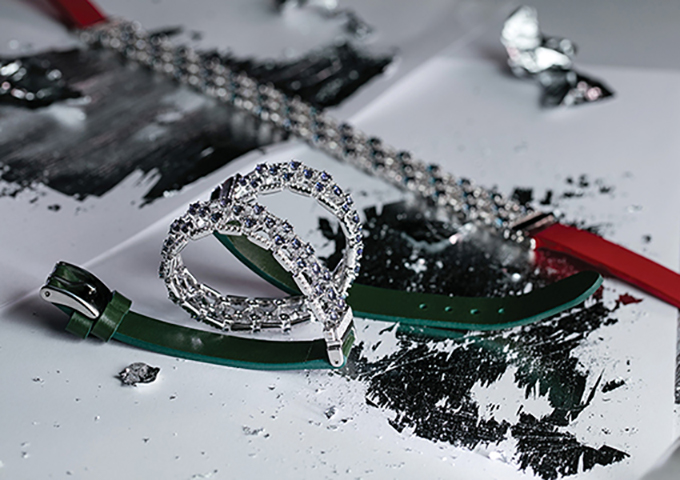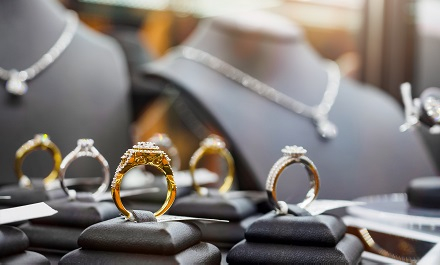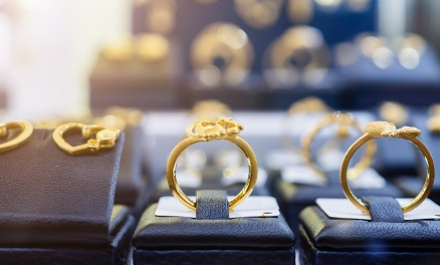Jewellers weigh in on the state of Hong Kong’s jewellery and gemstone sector in a quasi-post pandemic scenario, with industry leaders saying that the city is better positioned to achieve meaningful recovery in the second half of the year.
More than a year into a pandemic that changed the way business is conducted globally, Hong Kong is gradually but cautiously regaining its footing in the jewellery sector.
With Covid-19 heavily impacting buying behaviours, consumer trends and product preferences, jewellers are adjusting operations and continuously innovating strategies to support and sustain growth. And these efforts are bearing fruit.
Jewellery exports and retail sales are on the upswing, albeit from a low base of comparison in 2020 and 2019, while businesses are finding new and modern ways to communicate and engage with long-term clients as well as potential customers.
Companies are at the forefront of a digital revolution in the jewellery trade brought about by the Covid-19 crisis. According to the Hong Kong Trade Development Council (HKTDC), 45.4 per cent of Hong Kong-based traders interviewed for its Q1 2021 Export Index report intend to build online sales channels as a way to mitigate the pandemic’s impact on their operations.
Some companies developed new product categories, including collections of mask-friendly jewellery pieces such as earrings and mask accessories while others resorted to implementing various buyer programmes, discounts and multimedia promotions.
Demand for high-end jewellery meanwhile remained strong despite a challenging environment since consumers were adamant in celebrating life’s occasions such as Mother’s Day, graduations and anniversaries, among others.
Citing findings of JD.com’s Big Data Research Institute, the World Gold Council said jewellery ranked fourth among the most popular Mother’s Day gifts in 2021, further lifting consumer demand.
Traders are likewise banking on China to drive solid consumption growth, with Hong Kong turning its attention to the mainland from traditional jewellery and gemstone markets the US and Europe, which have been gravely affected by Covid-19 and are on the initial stages of recovery.
Hong Kong, for the most part, could be in a better position to re-establish its market prominence, buoyed by the measured reopening of different sectors. Postponed weddings are being rescheduled to 2021 while consumer spending is stable.
Jewellers however remain cautiously optimistic, adding that various macroeconomic and geopolitical factors such as a resurgence of Covid-19 and bilateral trade tensions continue to post a threat to any significant progress. Business growth also hinges upon successful global vaccination programmes. Another major challenge is the resumption of international travel, which is crucial to global trade show participation and tourist spending.
Changes and opportunities
According to Ken Lo, chairman of the Hong Kong Jewellery & Jade Manufacturers Association (HKJJA) and director of Eternity Manufacturing Ltd, customers have become more confident about buying jewellery online during the pandemic. This trend continues today.
For instance, the value of products that buyers are willing to purchase online has gone up from below HK$1,000 (around US$128) to HK$1,500 (around US$193).
The allure of seeing, touching and trying on a jewellery piece, particularly high-end items, however will never go away and some clients still visit shops to make a big-ticket purchase. In fact, demand for higher-value jewellery remained strong amid Covid-related restrictions and lockdowns.
“These are what we call ‘occasion jewellery’ for engagements, intimate weddings or Mother’s Day, among other celebrations. These products are still moving,” revealed Lo. “The pandemic has not deterred buyers. If they have to buy it, they will. This purchasing behaviour remains unchanged.”
The company official also raised the importance of keeping physical stores clean by enforcing sanitation protocols to ensure the safety of buyers and staff.
Lo explained that China will play a critical role in reviving Hong Kong’s jewellery sector, with the country seeing a massive rise in luxury purchases.
China is also expected to grow from strength to strength, with the World Bank anticipating the country’s economy to rally to 8.5 per cent this year, reflecting pent-up consumer demand. By comparison, the US is projected to grow by 6.8 per cent while emerging and developing countries could expand by 6 per cent.
Consultancy firm Bain & Co said China continues to fuel post-crisis recovery on the back of continuous high-value spending, citing results of a report released in May.
“The appetite of China and Chinese nationals for luxury remains insatiable and all customer nationalities are positively growing or on a recovery path,” the company said. “Growth of the online channel remains robust as new clients buy luxury online for the first time, and the range of prices is widening, with more entry-level products but also more high-end items.”
The personal luxury goods market, which includes expensive bags, clothes and jewellery, rebounded in Q1 2021 after a chaotic year, increasing by 0-1 per cent compared to 2019.
According to the report, sustained recovery in the luxury sector will mainly be driven by China and surprisingly, the US. It noted, “The US market has been an unexpected bright spot. Renewed consumer confidence coupled with stimulus and a rapid vaccine rollout has meant that luxury consumption returned at a surprisingly fast pace. Europe still lags behind, hampered by a slower vaccination campaign and the lack of international tourism.”
China is the next frontier for Hong Kong jewellers, Lo reiterated. During the past year, the mainland market actively spent on jewellery and other luxury items, prompting Hong Kong manufacturers and exporters to redirect their focus on China and the rest of Asia from conventional markets the US and Europe. This trend is expected to continue post-pandemic.
HKTDC’s Q1 2021 business confidence survey also showed that 36.5 per cent of respondents plan to develop the China market while 32.8 per cent aim to further diversify their customer portfolios.
The council’s export index report gauges near-term prospects in Hong Kong’s export sector while the business confidence survey, conducted on a quarterly basis, interviews 500 participating Hong Kong traders from six major sectors.
Business amid crisis
Companies are seeing the relevance of building a solid online presence to effectively reach buyers as a result of Covid-19.
Jason Lee, director of manufacturer, wholesaler and exporter Seaco Jewellery Ltd, said his company entertained a great deal of email quotations alongside video calls and meetings through messaging application WhatsApp and video conferencing platform Zoom.
These orders however were primarily placed by existing customers who are familiar with the company. Seaco’s major markets are the US and Europe. While video calls or meetings with potential customers have yet to translate to actual sales, Lee observed that buyers have become more accepting of inquiring about or purchasing products online.
He added that consumers have become partial to price-point, lower-quality items amid the pandemic.
This trend is expected to last even after the crisis abates. The company official commented, “If customers are ordering very standardised products, which they don’t have to see, select and inspect in person, we expect an increase in orders being placed online, by phone or email.”
Karen Li, business development manager of fine jewellery wholesaler and retailer Universal Jewellery Company Ltd, observed the same changes.
At the height of the pandemic, Universal Jewellery relied heavily on phone calls and instant messaging apps to touch base with clients, majority of which are overseas, and inform them of new designs and promotions. Local buyers would still visit the company’s retail shop.
Customers expect instant response to inquiries, especially since product information, which they can use to compare designs, sizes and prices, is readily available to them through the internet.
Li also underscored the importance of experiential retail in the jewellery trade. “It’s still imperative for a client to see and feel the jewellery, especially designer, big-ticket items,” she remarked.
Universal Jewellery’s top markets are the US, China, Southeast Asia, Taiwan and lately, the United Kingdom. Li said the company’s wholesale business declined as opposed to its retail arm, which saw an uptick in sales.
She attributed this to buyers having bigger discretionary incomes, which they use to buy investment items like top-quality jewellery and gemstones in lieu of traveling and other luxury spending.
“High-end jewellery pieces are performing extremely well. The higher the quality, the better the sales,” she revealed. “Sales rose at the start of the pandemic as people took advantage of lower diamond prices but premium-quality diamonds are still moving even though prices have stabilised.”
In terms of designs, consumers are looking for easy-to-wear jewellery pieces with an enduring and universal appeal, continued Li. Demand for mid-range products could further gain traction, but with the reopening of borders, people will again start attending functions and gatherings, hence the need for special, higher-end jewellery pieces.
Real and lasting recovery
With steady consumption recovery alongside companies’ efforts to control and reduce overhead expenses and other costs, Hong Kong is in a much better shape than it was when it was plagued by the Covid-19 crisis and political protests, according to Lawrence Ma, president of the Diamond Federation of Hong Kong, China (DFHK).
Sustained growth also hinges on a successful vaccination programme, the continued rise of e-commerce as well as China further fuelling consumer demand. Significant economic recovery in major markets during the second half of 2021 could likewise trickle down to the jewellery industry.
“We are hopeful for stronger recovery in the second half of the year in Hong Kong. By July or August, we see things turning for the better,” noted Ma. “We are counting on international travel resuming – this is crucial to Hong Kong as a jewellery manufacturing and trading hub – but regional travel is a good start.”
Ma, who is also CEO of Lee Heng Diamond Group and founder of MaBelle Jewelry, said Hong Kong will see hefty improvements in export and retail sales figures in the next two to three months, but these are mainly due to a low base in 2019 and 2020.
Data from the city’s Census & Statistics Department showed jewellery sales in April went up by 93.2 per cent compared to a loss of 76.6 per cent in April last year. Sales in April 2019 were down by 11.4 per cent. By comparison, jewellery sales during the same period in 2018 rose by 24.6 per cent.
Jewellery exports behaved the same way, with April 2021 figures showing a 62 per cent increase compared to a decline of 37.3 per cent last year and 8.6 per cent in 2019. Jewellery shipments meanwhile increased by 31.5 per cent in April 2018.
“The picture is not that rosy since we’re coming from a very low benchmark from March until June. Ideally, real recovery should be measured against pre-Covid and pre-protests figures,” noted the DFHK official. “However we are better positioned for recovery in the second half of the year.”
With improving economic fundamentals, Ma expects a resurgence in consumers’ purchasing power, lower unemployment rate as well as Chinese tourists once again visiting Hong Kong.
Post-crisis growth
HKJJA’s Lo is also upbeat about prospects in the jewellery trade, adding that China and most recently, the US, will be the main catalysts for growth.
“There’s now an opportunity to sell everywhere, with the advent of online shopping. The trend is quite positive,” he remarked. “Overhead costs are lower so we should be able to balance our books. Business will come back quite strongly and even reach pre-Covid levels.”
Companies however should be cautious in expanding their operations and increasing production lines since the threat of Covid and other uncertainties remains.
Li of Universal Jewellery underscored the increasing importance of an online component in every business.
“People seeking information and even doing business online is here to stay. We expect hybrid events as well as industry crossovers to happen even more,” she shared. “However, jewellery stores and physical shows will always be an important part of the business as buyers continue to value personal shopping experience.”
